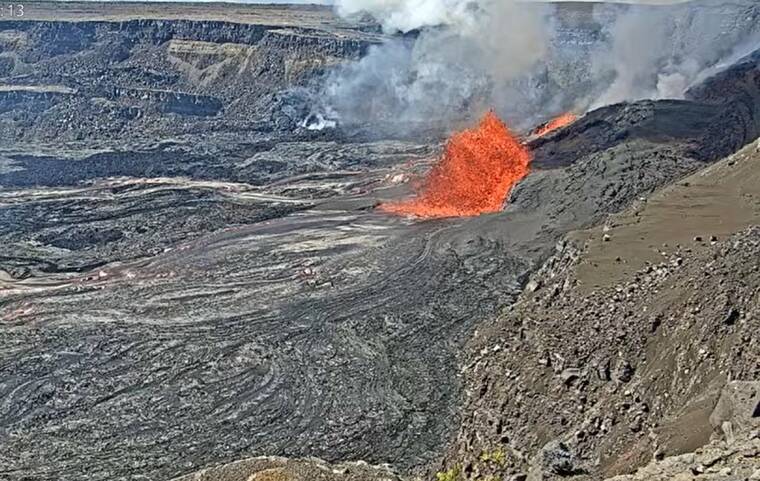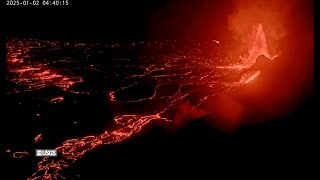1/2
Swipe or click to see more
USGS
Live view of the eruption in Halemaumau, from the northwest rim of the caldera [V1cam].

2/2
Swipe or click to see more
U.S. GEOLOGICAL SURVEY
A screenshot of the live view of the eruption in Halemaumau, from the northwest rim of the caldera, this morning. Hawaiian Volcano Observatory scientists say vigorous lava fountaining began early today at Kilauea’s summit, marking the 30th eruptive episode in the current Halemaumau eruption.


Hawaiian Volcano Observatory scientists say vigorous lava fountaining began early today at Kilauea’s summit, marking the 30th eruptive episode in the current Halemaumau eruption.
The activity started around 1:20 a.m. with broad fountains 150 to 300 feet high from the crater’s north vent, covering about 20% of the crater floor. A new line of smaller fountains also emerged south of the old south vent area, coinciding with a cluster of small earthquakes.
All activity remains confined within Halemaumau inside Hawaiʻi Volcanoes National Park. The volcano’s alert level remains at watch with an aviation color code of orange.
In past episodes, lava fountains have exceeded 1,000 feet, sending plumes up to 20,000 feet high. Winds early today were light and variable from the north, meaning volcanic gas, ash, and Pele’s hair — strands of volcanic glass often produced by lava fountaining activity — could drift to the south and potentially spread more widely than under typical tradewind conditions.
No changes have been detected along Kilauea’s East Rift Zone or Southwest Rift Zone. Most recent episodes have lasted a day or less, followed by several days of pause.
HVO warns that high levels of volcanic gas — mainly sulfur dioxide — can create vog far downwind, and falling Pele’s hair can cause skin and eye irritation. Visitors and residents should avoid exposure, particularly in downwind areas.
Don’t miss out on what’s happening!
Stay in touch with breaking news, as it happens, conveniently in your email inbox. It’s FREE!
The eruption poses no threat to nearby communities. However, hazards around the closed summit area remain, including unstable crater walls, ground cracking and rockfalls triggered by earthquakes.
